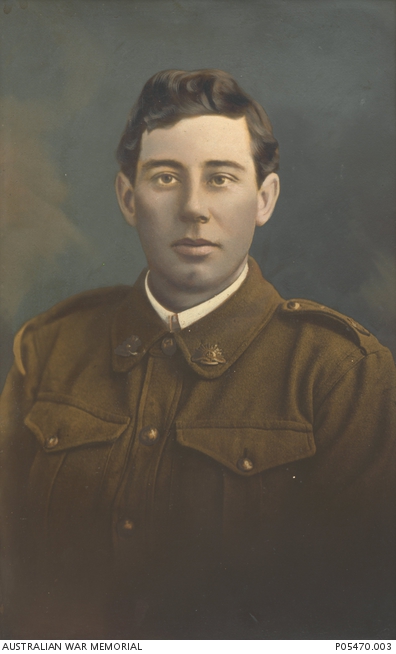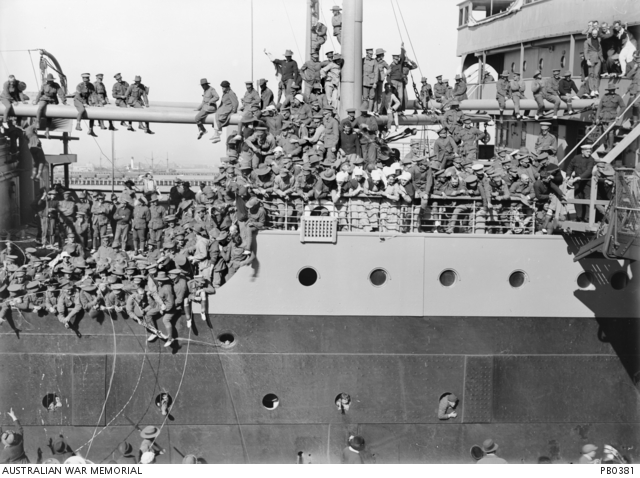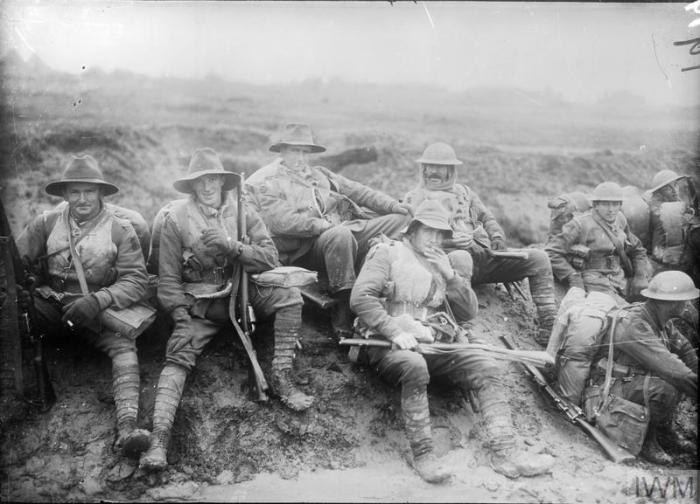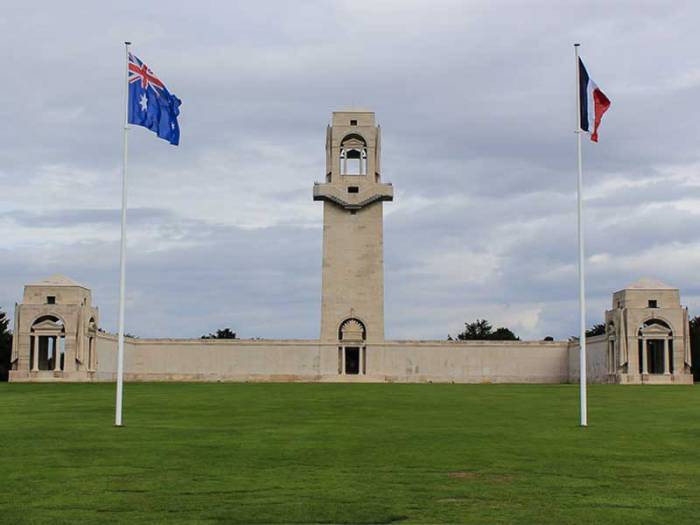News of the loss of Allen would surely have been a terrible blow to the Douglas family, their worst fears were realised in a pink telegram.
For George and Mary in particular their quest for news of the fate of their sons, their personal belongings, or any shred of information was about to begin. While reading through the service dossiers of each of these men I came across many handwritten letters from both parents – the contents of which are hard to read.
Even 100 years later these personal letters to Army Headquarters begging for news as to the fate of their sons, is a bitter read. They are still too personal, too emotional, to share here, their pain in carefully written letters are reflected thousands of times over by thousands of parents and wives.

We’re not exactly sure why Gordon chose to enlist so long after the initial wave of enthusiasm when war was declared in 1914. Perhaps it was a desire to be with his younger brother Allen but nonetheless he left his terrace house he shared with his wife at 72 Bondi Road, Bondi, and set off to the nearby enlistment office at Victoria Barracks in Paddington. Perhaps it was his desire to provide for his own family was what driven him.
It was during my research into Gordon that a little family mystery has appeared.
According to the NSW Registry of Births, Deaths and Marriages Gordon married ‘Harriet Shaw’ in 1912. However in Gordon’s service records his next of kin is recorded as his wife ‘Ethel Douglas’ and has a step-child known as ‘May’.
Despite my best efforts I haven’t been able to shed any further light into this mystery.
Part 2.
GORDON

On the 25th of August 1915 Gordon became the second of the Douglas brothers to enlist into the Australian Imperial Force at exactly the same location his younger brother Allen did in April earlier that year.
Gordon was assigned the 17th Battalion, as an Infantry soldier.
The 17th Battalion was raised at Liverpool in New South Wales in March 1915 as part of the 5th Brigade. It left Australia in early May, trained in Egypt from mid-June until mid-August, and on 20 August landed at ANZAC Cove, five days before Gordon enlisted.
After his initial training on the 2nd November 1915 Gordon bid farewell to his wife Ethel and probably his parents and younger siblings. He sailed to Egypt aboard HMAT ‘Euripides’ where soon after arriving he contracted Influenza and was hospitalised in Cairo between 17 to 21st of December. Luckily for Gordon he was spared from the carnage on Gallipoli.

After the 17th was evacuated from Gallipoli Gordon joined the Battalion for further training in Egypt prior to sailing to France. It was during this time Gordon would have to seen his brother Allen as they were all co-located together at the same training camp.
Finally the Australian Imperial Force based in Egypt were ordered to France and so in the late afternoon of the 17th of March the officers and men of the 17th sailed to Marseilles aboard the HMT Crispan. Unfortunately Gordon and Allen battalions were deployed aboard separate vessels two days apart and thus didn’t travel together from Egypt to northern France.
Just as Allen’s 20th Battalion introduction to the Western Front, so too did Gordon’s 17th Battalion was no less traumatic. Both Allen and Gordon were defending the same locality at ‘Bois-Grenier’ and soon both of them took part in the Battle of Pozieres where tragically Allen was killed.
Gordon’s hardship and misery didn’t end there. The 17th Battalion went on to take part in the defence of the Australian sector of the Western Front under extreme conditions. The Battalion returned to the Pozieres trenches for a second time, although in a reserve role, between 18 and 28 August. After a spell in a quieter sector of the front in Belgium, the Battalion came south again in October. The 17th Battalion was spared from having to mount an attack across the quagmire the Somme battlefield had become, but did have to continue manning the front through the very bleak winter of 1916/17.
It was during this time that Gordon saw a rapid rise in promotion due to the hardships of war service on the Western Front that saw many vacant ranked positions needing replacing.
On the 10th of August he was promoted to Lance Corporal. The following year in January 21st he was promoted to Corporal and only two months later he was promoted again to Lance Sergeant.

Australian soldiers on the Somme – December 1916.
The Hindenburg Line
While Gordon and his mates endured the harsh European winter the German Army, under considerable strain from combat on two fronts, constructed a prepared defensive position some three kilometres behind their front-line trenches.
This became the beginning of a formidable and renowned German capability – the defensive fortification – and a significant barrier to allied advances.
By March 1917 the German Army units began withdrawing to their newly constructed defensive line – the allies, not being blind to events, quickly followed-up the retreating Germans. In an attempt to capitalise on their gains over the Germans the British high command decided to press home the advantage and immediately attack the Hindenburg Line.
For Gordon, the hardships he endured were alleviated somewhat by the news that his young brother Kenneth had applied to be transferred to the 17th Battalion. It goes without saying that Gordon would have been relieved to have Kenneth with him, to protect his little brother and survive this hell.
The First Battle of Bullecourt
Bullecourt is a village in northern France that formed part of the German defensive positions at the Hindenburg Line.
The British High Command planned to use the 4th Australian Division and the 62nd British Division to attack the Hindenburg Line near the village of Bullecourt. Rather than wait until there was sufficient artillery resources, the decision was to employ a dozen tanks to lead the troops through the enemy’s barbed-wire.
An attack set for 10 April was suddenly abandoned when the tanks did not arrive. It went ahead the next morning with disastrous results. Exposed to murderous machine-gun and artillery fire the Australians were forced back to their own lines while tanks stood burning on the battlefield. The Australians had 3,000 men killed or wounded; 1,170 Australians soldiers taken prisoner; this was the largest capture of Australian prisoners up until the fall of Singapore in 1942. Many survivors remained bitter about such a futile waste.
Charles Bean, the Official Historian for the Australian Imperial Force summed up the feeling: ‘Bullecourt, more than any other battle, shook the confidence of Australian soldiers in the capacity of the British command; the errors, especially on April 10th and 11th, were obvious to almost everyone’.
Fortunately for Allen and his men, they were spared from the disaster at Bullecourt; but the Germans weren’t finished with the Australians and Gordon and his men faced them at nearby Lagnicourt.
Observing that the 1st Australian Division was holding a front of about 12,000 meters, the local German corps commander planned a spoiling attack to drive back the advanced posts, destroy supplies and guns and then retire to the Hindenburg defences. Passing his plans to higher command, they assigned an extra division to his corps to further strengthen the attack.
Attacking with 23 battalions, the German forces managed to penetrate the Australian front line at the junction on the 1st Australian Division and 2nd Australian Division and occupy the village of Lagnicourt (damaging some Australian artillery pieces).
The War Diary of the 17th Battalion records the following:
German attacks broke through 12 Battalion on our right at 4:55 AM. This left our right flank in the air were were forced to retire to our outpost line with right Coy under Lieut Shappard at 5:20 AM. By this time the enemy were well in the rear of our right and were almost down to NOREUIL.
We counter attacked at 6 AM in conjunction with 19th and 20th Battalions and by 8 AM had regained all lost ground.
We captured two machine guns and 54 prisoners. There were some hundreds of dead in front of our positions.
Our casualties were 5 officers wounded.
43 OR killed.
82 OR wounded.
51 OR missing.
Tragically Gordon was one of the men killed that day.
Later, a Lieutenant Smith of the 17th stated to Red Cross investigators;
I knew Douglas, his initial was G, and he was a Sergeant when he was killed. He was in C Company. He was medium in height, inclined to be fair, medium build.
He was in charge of a small post in front of the Hindenburg Line at Noreuil on 15/4/17; on the afternoon of that day the Hun located the machine gun at Douglas’ post. About 3 p.m. the German’s registered with Heavy Artillery on that post and got direct hits on to this post; one shell hit Douglas direct and killed him outright. I was there at the time, Pte White was on the same post and was killed the same way.
Douglas was a real good chap.
Further corroborating evidence from the Red Cross investigation into Gordon’s fate confirmed that Gordon died from a direct hit by an artillery shell and that his body was ‘blown to bits’. What remained of his body was hastily buried on the spot.
Within weeks Gordons wife Ethel would be visited by the feared telegram boy and tearfully opened the envelope that contained the dreaded pink telegram.
It would take almost another year before Gordon’s personal effects reached her. A damaged wristwatch, some handkerchiefs, a corkscrew, two brushes, a notebook and a balaclava are all that remained of Gordon.
Today, Gordon has no known grave. His name is among 10,773 names of Australian soldiers with no known grave, engraved on the walls of the ‘Villers–Bretonneux Australian National Memorial’ in northern France.
Lest we Forget.

To be continued to our final chapter……

